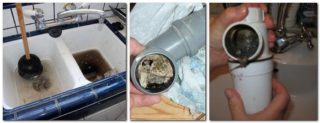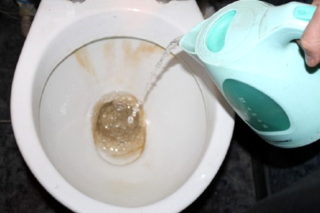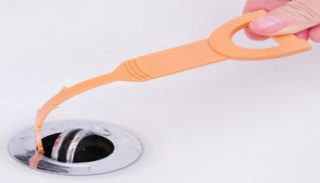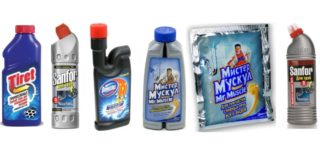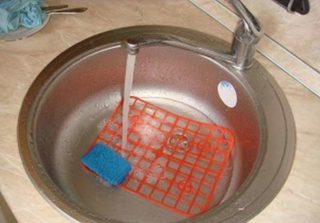Sink, toilet, bath, shower are mandatory attributes in almost every home. All plumbing has a drain, which is periodically clogged. This is due to the fact that food residues, grease or debris, as well as hair accumulate in the sewer pipes, which ultimately leads to a serious blockage of the sewer. How to clean pipes on your own?
How to determine the location of the blockage
It is necessary to run water in the entire system (in the kitchen sink, in the bathtub, in the toilet) and see:
- if water accumulates in several devices at once, this means that the blockage is common and is localized at one of the plumbing connection points to the sewage system;
- if water does not leave in only one device, this means that the blockage is local and has formed in the siphon or water seal. The easiest way to get rid of it is;
- if water stagnation occurs immediately in the entire system, a call to a plumber will be required to eliminate it.
You can solve the problem yourself with local and general blockages. There are several methods for this.
Methods for clearing minor blockages
- For metal pipes, pour boiling water into the system. For a plastic sewer, it is necessary to put hot water down the drain for 20 minutes. The loose blockage should disappear.
- A mixture of 200 ml of water, 100 g of soda and salt will effectively remove the blockage. All ingredients must be mixed and poured into the pipe. Leave the solution to act for 15 minutes, then use a plunger. To complete the procedure, let the water run for a while to wash off the remaining contamination.
- A good solution for cleaning the pipes is to use a blow-back vacuum cleaner. The pipe of the device is wrapped with a cloth so that it fits snugly into the drain hole. A strong air flow will help push through the plug.
- Another way to clean your sink is to use a 1 in 1 mixture of vinegar and baking soda. The agent is poured into the pipe and the hole is closed with a stopper. The corrosive foam generated by the chemical reaction will effectively corrode the blockage.
If the above methods did not bring the desired result, this means that the blockage in the pipes is serious enough and more aggressive methods will be required to remove it.
Mechanical cleaning method
- When using a plunger, the instrument should be firmly pressed against the drain and pressed several times. The hydraulic column created by these actions will destroy the formed seals in the pipes. The cork will collapse into smaller fragments, which will flow into the sewer with a stream of water. IMPORTANT! If the sink has two cups at once, it is better to use two plungers for them at the same time. This will increase the suction power and allow the pipes to be cleaned faster. If there is no second plunger, you can close the drain on the second bowl with your palm.
- The method of cleaning with the help of special hooks made of plastic is gaining great popularity, which easily remove complex blockages.The hook is carefully lowered into the pipe as deep as possible, and then the rail is turned in different directions several times. Twisting the hooks curl hair and other dirt that remains on the fixture. After the procedure, the bar is carefully removed along with the collected dirt. The procedure is repeated if necessary.
- Heavy blockages in metal pipes can be removed with a steel plumbing cable, one end of which has a handle and the other with a brush. The cable should be lowered into the pipe as deep as possible and twisted, then pull the debris out. It is recommended to periodically run warm water during the procedure - this will allow most of the dirt to be flushed down the drain. This method is not suitable for cleaning plastic pipes, as the cable can seriously damage them. For plastic sewers, it is recommended to use a plunger or special household chemicals from blockages.
Chemical method
The stores offer a wide range of alkali and acid based products that, due to their high reactivity, easily break down blockages. Products are available in the form of gels, granules and liquids.
IMPORTANT! Frequent use of this method is not recommended, since chemical components have a negative effect on the inner surfaces of the pipes.
Prophylaxis
Recommendations:
- Clean pipes regardless of blockages.
- Once every few days, run hot water and flush the system with it - this will get rid of excessive grease deposits on surfaces.
- Use nets for draining, which reliably protect structures from debris.
- Do not throw garbage and food waste into the sewer system.
Following these simple tips will allow you to avoid a complex of procedures for cleaning the sewer system.
The formation of technical blockages can cause a lot of problems for the owner of the premises. Emergency situations are not excluded. The best way to deal with blockages, of course, is to prevent their occurrence and timely care for the drainage system. If a plug does form in the pipe, the simplest and most harmless way to get rid of it is to clean it with a plunger. It is necessary to use store products very carefully so as not to spoil the internal surfaces.

